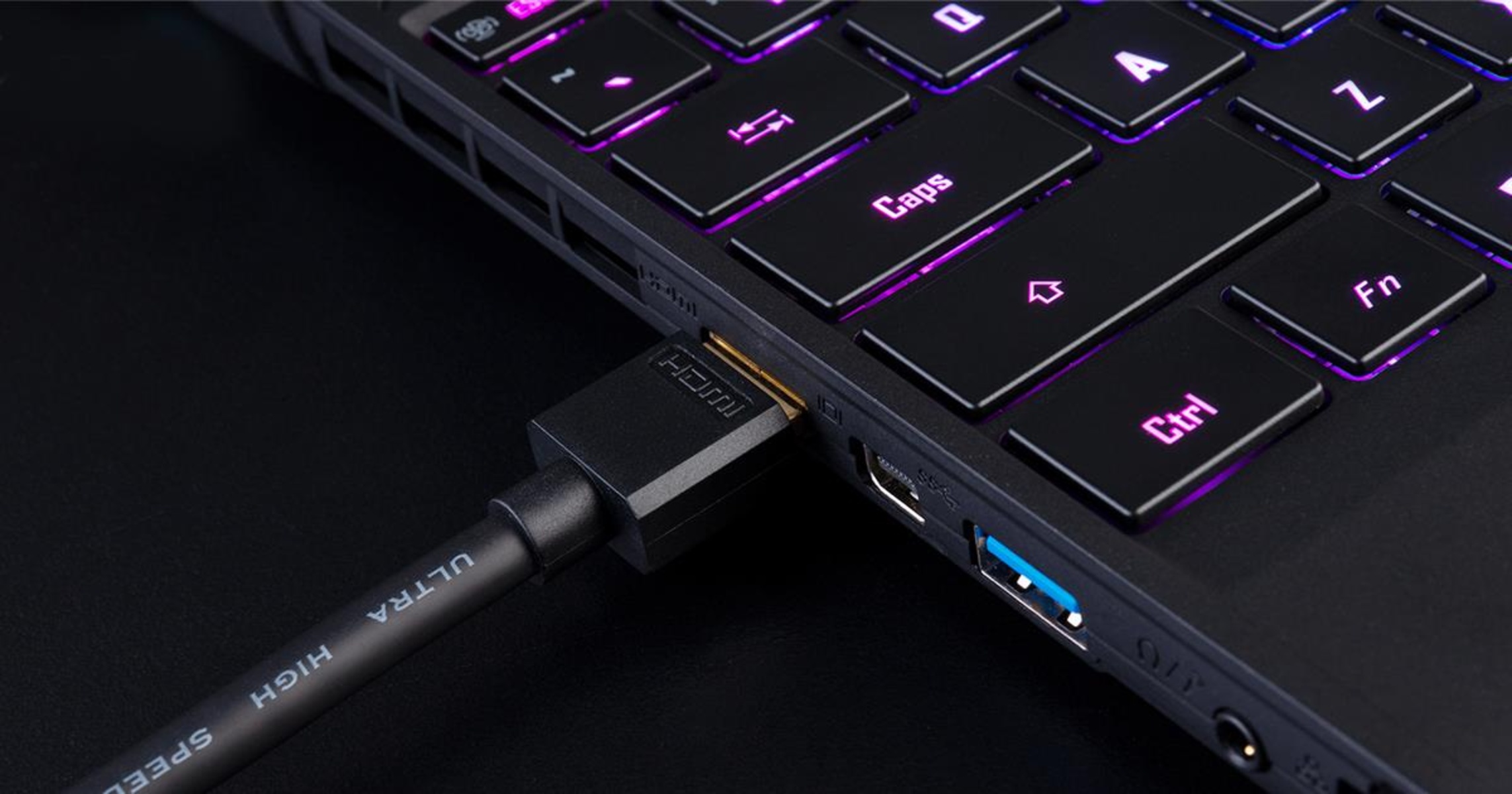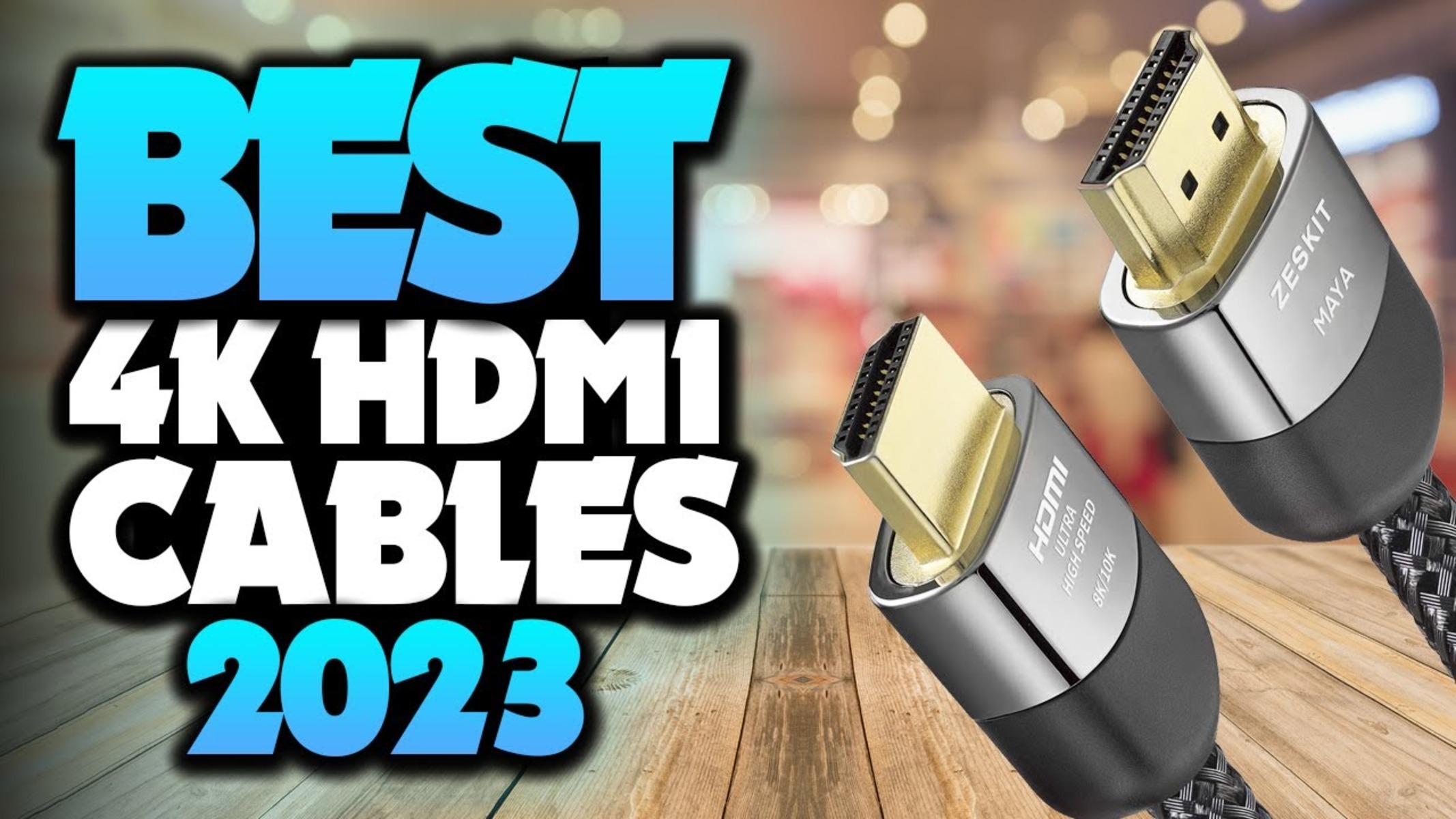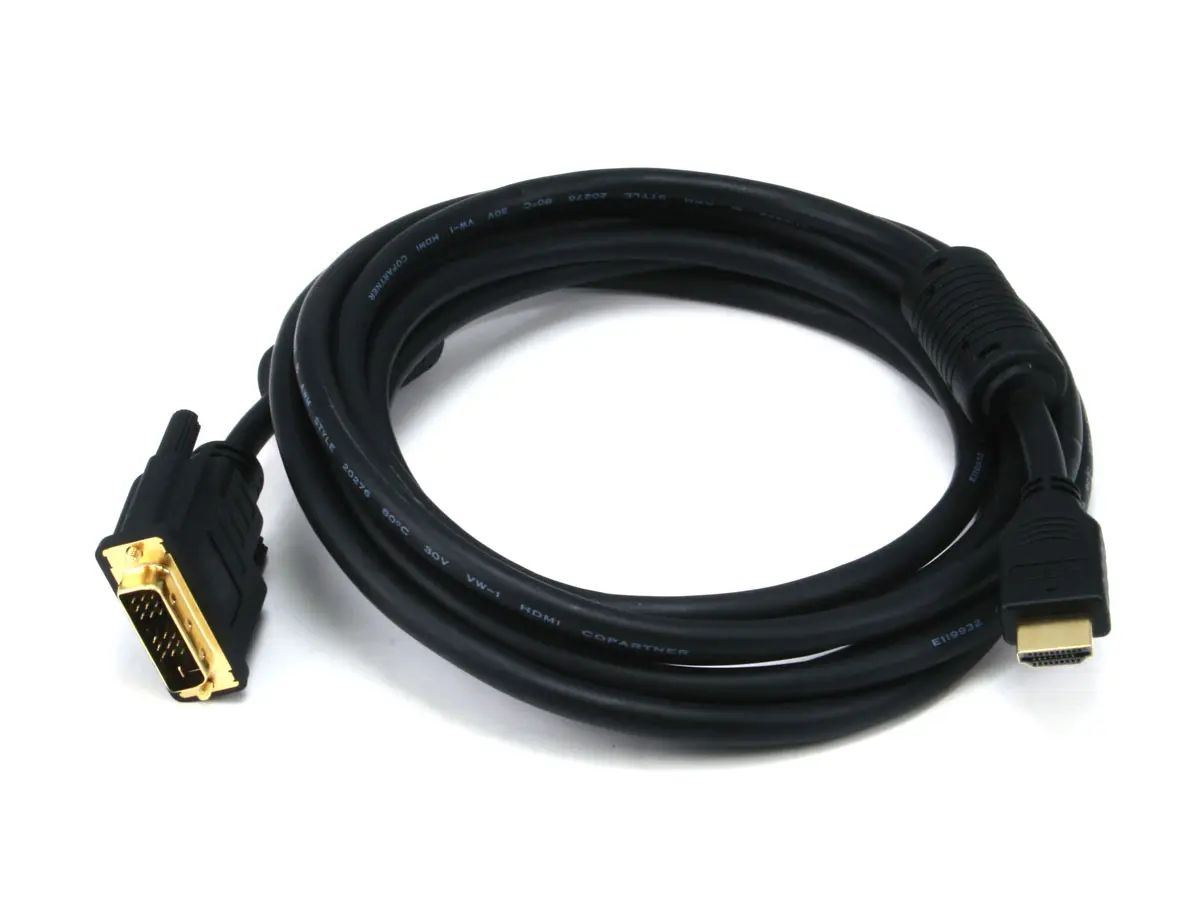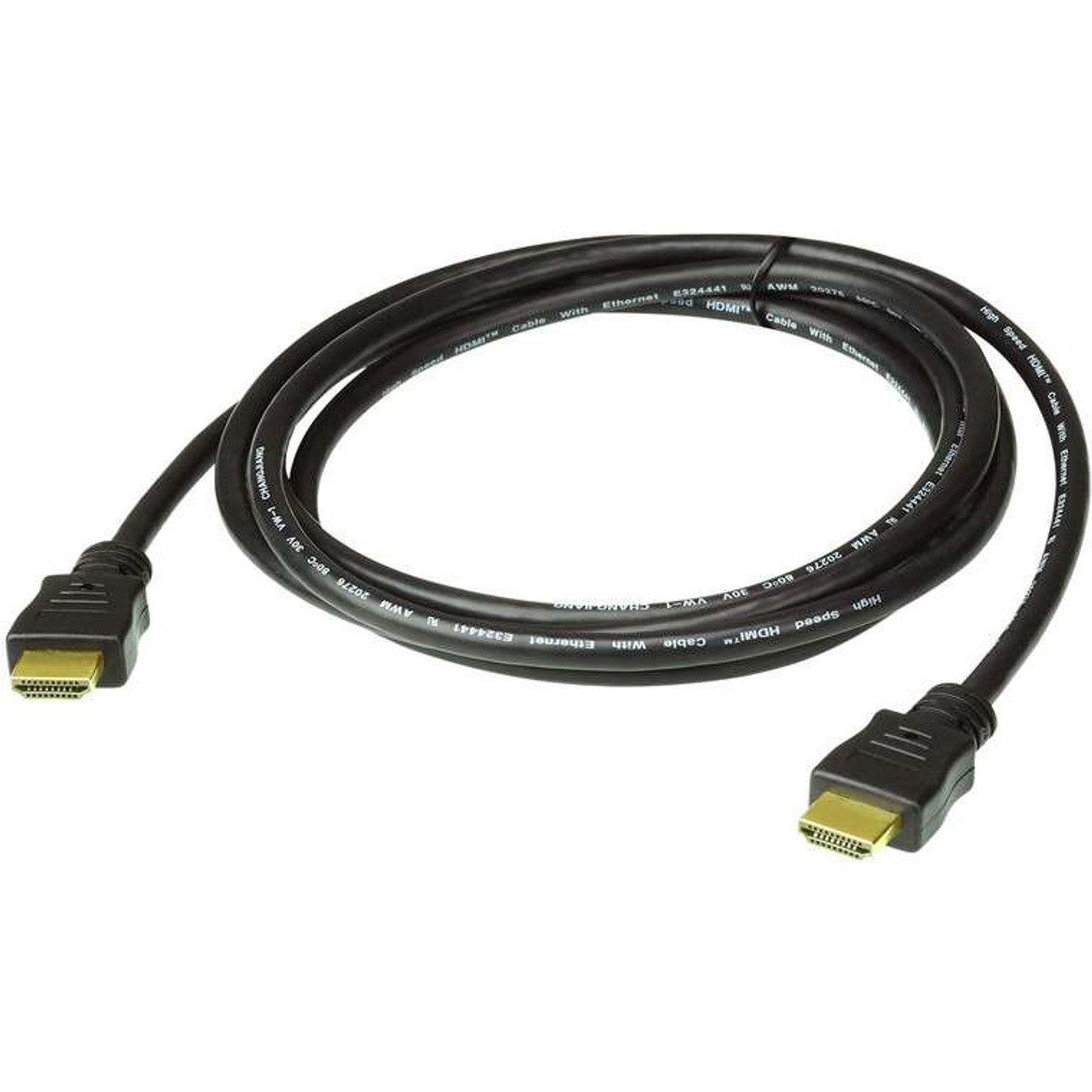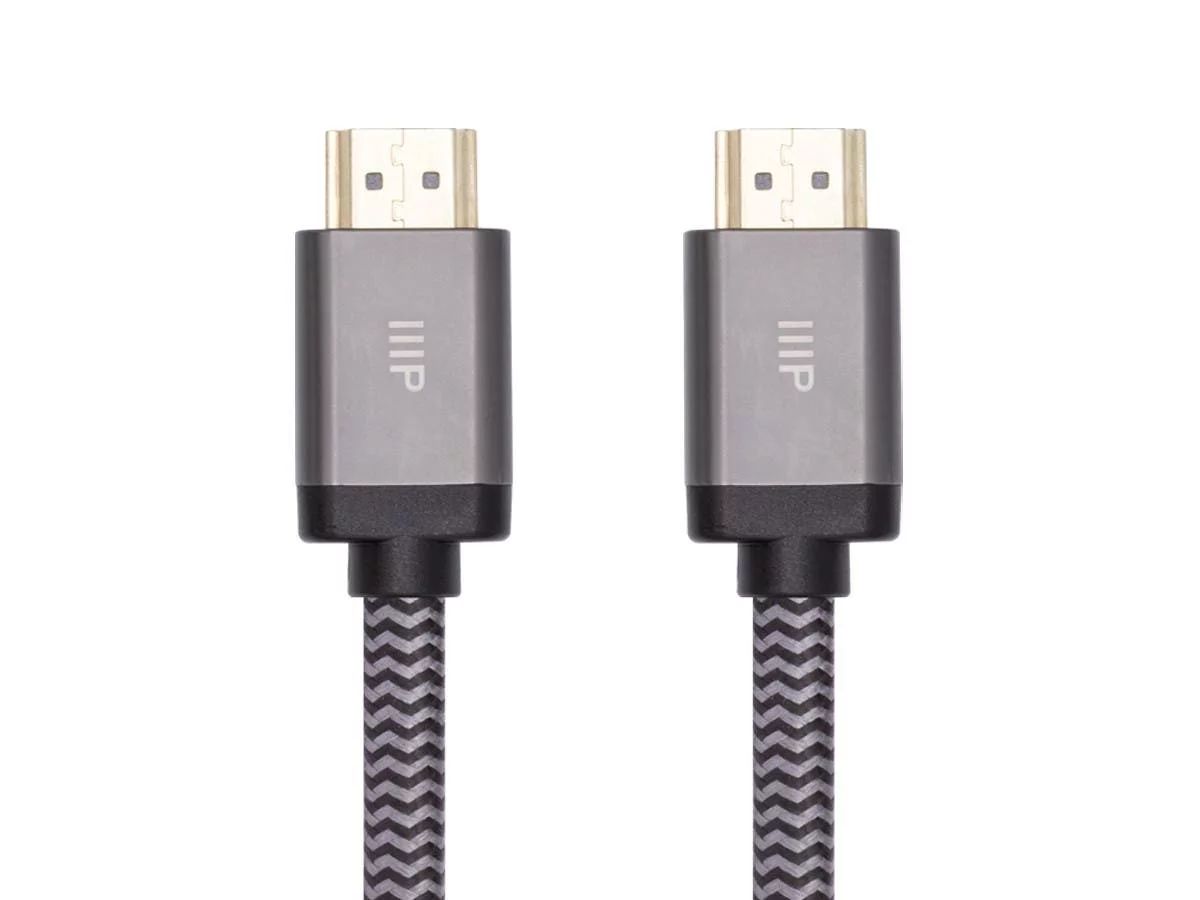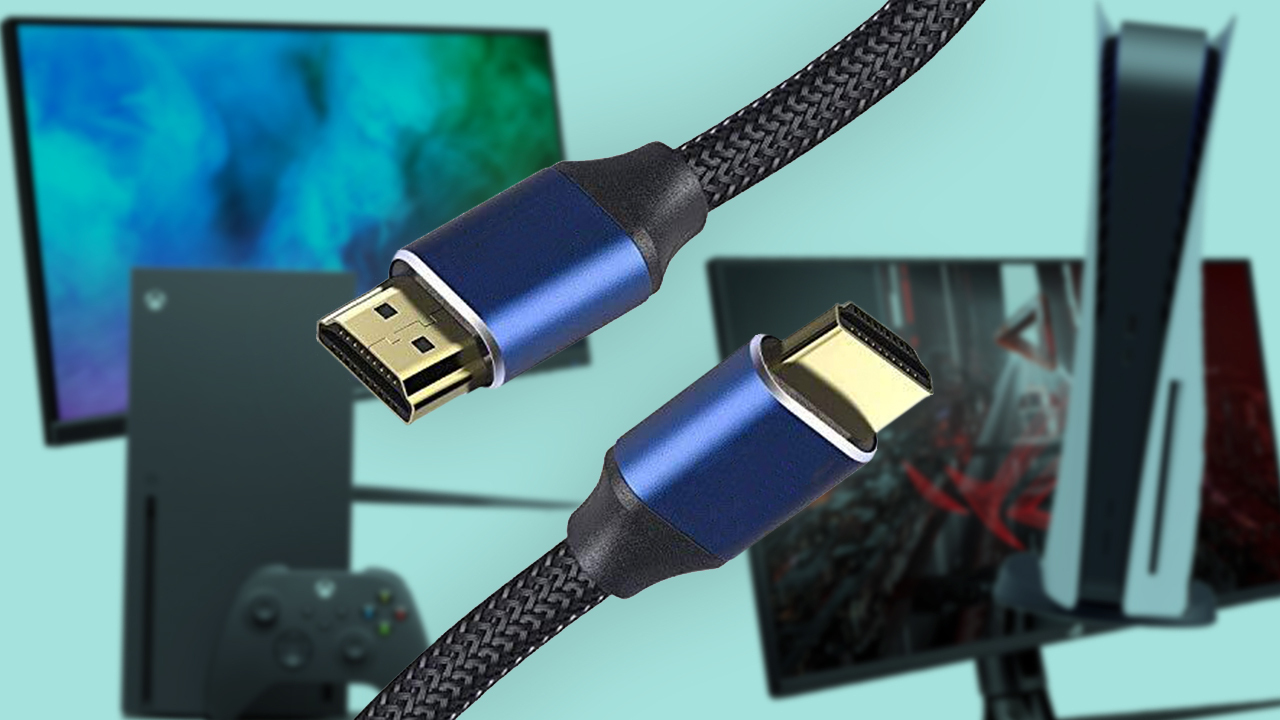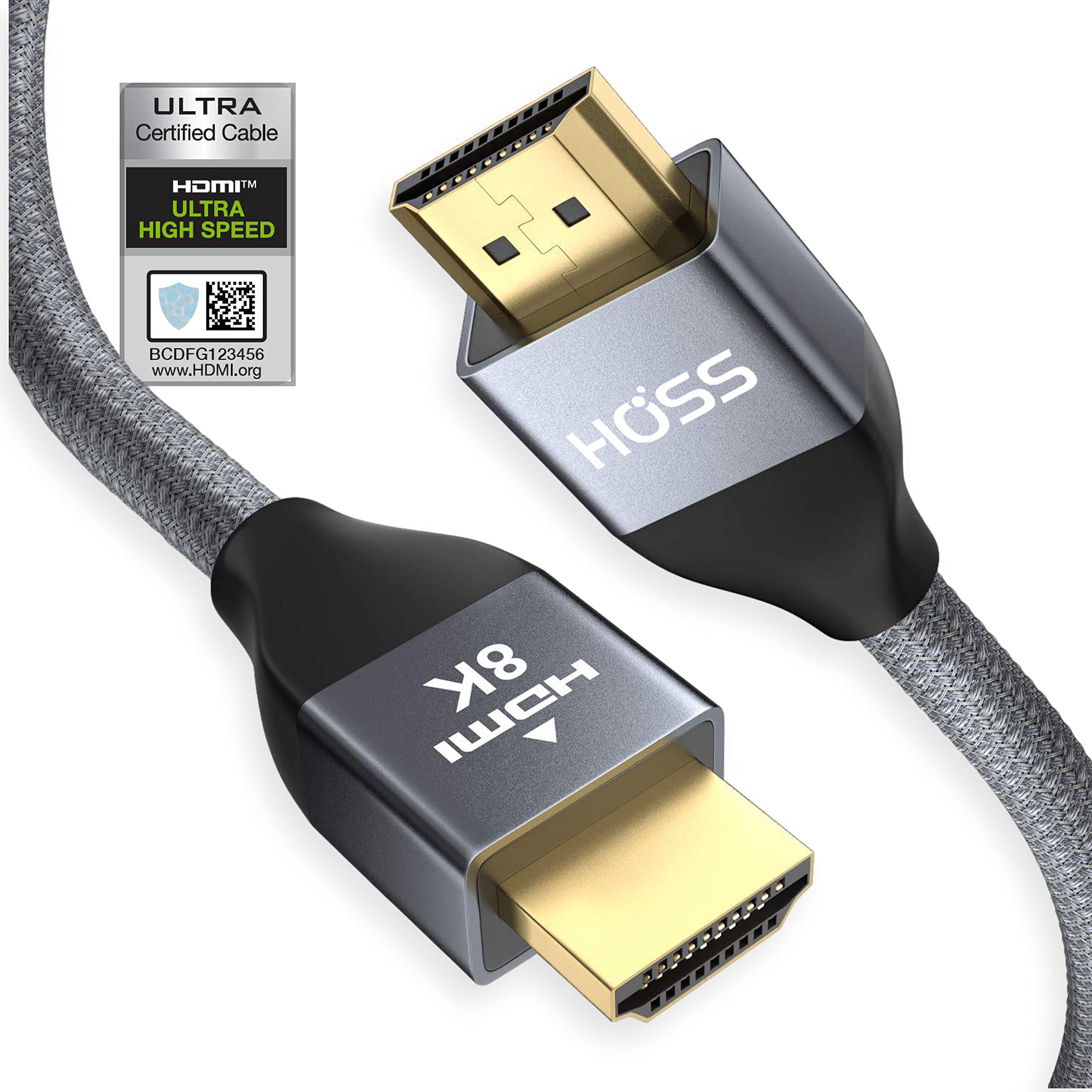What is HDMI?
HDMI, which stands for High-Definition Multimedia Interface, is a digital audio/video interface that allows for the transmission of high-quality audio and video signals between devices. It has become the standard connection for many electronic devices, including TVs, gaming consoles, DVD players, and computers.
HDMI provides a convenient solution for connecting different devices and enjoying high-definition content. It supports both audio and video signals, eliminating the need for multiple cables and connections. With HDMI, you can easily connect your devices and experience superior audio and video quality.
One of the advantages of HDMI is its ability to support high-resolution content. It can handle the transmission of 4K Ultra HD video, allowing you to enjoy stunning visuals with incredible detail and clarity. HDMI also ensures that the audio quality remains uncompressed, delivering immersive sound along with the high-resolution video.
HDMI cables come in different versions, which determine their capabilities and supported features. These versions include HDMI 1.4, HDMI 2.0, and the latest HDMI 2.1. Each version offers improvements in terms of bandwidth, resolution support, and additional features.
Overall, HDMI has revolutionized the way we connect and enjoy multimedia content. It has simplified the process of connecting devices and ensures that you can experience high-definition audio and video with ease.
What is Refresh Rate?
The refresh rate refers to the number of times per second that a display updates the image being displayed. It is measured in Hertz (Hz). A higher refresh rate means that the image is refreshed more frequently, resulting in smoother and more fluid motion on the screen.
When a display has a low refresh rate, such as 60Hz, the image on the screen may appear choppy or have motion blur, especially during fast-moving scenes in movies or games. This is because the display is not refreshing the image quickly enough to keep up with the motion.
On the other hand, a higher refresh rate, such as 120Hz or 144Hz, provides a smoother viewing experience. The increased refresh rate allows for more frames to be displayed per second, reducing motion blur and providing a more responsive and immersive visual experience.
The refresh rate is particularly important when it comes to gaming. A higher refresh rate can greatly enhance the gaming experience by reducing input lag and providing smoother gameplay. It allows for faster reaction times and more precise control, which can be crucial in fast-paced games.
It’s worth noting that while a higher refresh rate can improve the visual experience, it also depends on the content being displayed. Not all content is created with a high refresh rate in mind. For example, most movies and TV shows are typically filmed at 24 frames per second, so the benefits of a high refresh rate may not be as noticeable.
In recent years, there has been an increasing demand for displays with higher refresh rates, especially in gaming. Manufacturers have been releasing monitors and TVs with refresh rates of 120Hz, 144Hz, and even higher. To take advantage of these higher refresh rates, it’s important to ensure that the device sending the video signal, such as a gaming console or a graphics card, also supports the desired refresh rate.
Why is 120Hz Important?
120Hz is considered an important refresh rate for many reasons, especially when it comes to gaming and fast-paced content. Here are some key reasons why a 120Hz refresh rate is significant:
- Reduced Motion Blur: With a higher refresh rate, such as 120Hz, the image on the screen is updated more frequently. This reduces motion blur and makes the visuals appear smoother and more fluid. It is particularly important for fast-paced games or action-packed movies, where quick movements can result in blur on lower refresh rate displays.
- Enhanced Responsiveness: A 120Hz refresh rate improves the responsiveness of the display. This is especially crucial in gaming, where every millisecond counts. The faster refresh rate allows for quicker updates on the screen, reducing input lag and providing a more immersive gaming experience.
- More Frames Per Second: A higher refresh rate means that more frames can be displayed per second. This results in smoother animations and visuals, making the content feel more lifelike and engaging. It enhances the overall visual experience and makes gaming or watching high-action scenes more enjoyable.
- Compatibility with High-End Gaming: Many modern gaming consoles and high-end gaming PCs are capable of outputting graphics at 120 frames per second. In order to fully utilize these devices, a display with a 120Hz refresh rate is required. Without it, the full potential of the gaming hardware may not be realized.
- Future-Proofing: The technology and content being developed are increasingly taking advantage of higher refresh rates. Investing in a display with a 120Hz refresh rate ensures compatibility with future devices and content. It allows you to stay ahead of the curve and enjoy the benefits of smoother visuals and improved responsiveness for years to come.
While a 120Hz refresh rate offers notable benefits, it is essential to consider other factors such as device compatibility and display requirements before making a purchasing decision. Nonetheless, for those seeking a more immersive and visually stunning experience, a display with a 120Hz refresh rate is undoubtedly a significant upgrade.
HDMI Versions that Support 120Hz
Not all HDMI versions support a 120Hz refresh rate. It is important to understand which HDMI versions are capable of delivering this higher refresh rate in order to ensure compatibility with your devices. Here are the HDMI versions that support a 120Hz refresh rate:
- HDMI 1.4: HDMI 1.4 is an older version of the HDMI standard that was introduced in 2009. While it does support a 120Hz refresh rate, it is important to note that it is limited to a 1080p resolution. This means that you can only achieve a 120Hz refresh rate at 1080p resolution or lower. If you are looking for higher resolutions, such as 4K, you will need to consider a newer HDMI version.
- HDMI 2.0: HDMI 2.0 is an updated version of the HDMI standard that was released in 2013. It supports a 120Hz refresh rate, but with the added benefit of being able to handle higher resolutions. With HDMI 2.0, you can achieve a 120Hz refresh rate at resolutions up to 4K Ultra HD. This makes it a suitable choice for those who want to enjoy high refresh rates with higher resolution displays.
- HDMI 2.1: HDMI 2.1 is the latest version of the HDMI standard, introduced in 2017. It offers even more significant improvements over previous versions. HDMI 2.1 supports a 120Hz refresh rate at 4K resolution and can even handle higher refresh rates at 8K resolution. It also introduces other features like variable refresh rate (VRR), which synchronizes the display’s refresh rate with the output from the device, reducing screen tearing and providing a smoother gaming experience.
It is worth noting that while the HDMI version of your display is important, you also need to ensure that the connected devices, such as gaming consoles or graphics cards, support the desired refresh rate. In some cases, an HDMI 2.0 or HDMI 2.1 display may not achieve a 120Hz refresh rate if it is connected to a device that does not support it.
Considering the capabilities of different HDMI versions is crucial when choosing the right HDMI cable, display, and devices to ensure seamless compatibility and the ability to enjoy a 120Hz refresh rate.
HDMI 1.4
HDMI 1.4, introduced in 2009, is an older version of the HDMI standard that supports a 120Hz refresh rate. However, it is important to understand its limitations and compatibility factors.
One key feature of HDMI 1.4 is its ability to handle a 120Hz refresh rate, but only at a maximum resolution of 1080p. This means that if you are using a display with a resolution of 1080p or lower, you can enjoy a smooth 120Hz refresh rate. However, if you are looking for higher resolutions, such as 4K, HDMI 1.4 may not be the ideal choice.
In addition to the refresh rate limitation, HDMI 1.4 has other features that might be essential depending on your requirements. It supports 3D content and provides an HDMI Ethernet Channel, allowing for an internet connection to be transmitted through the HDMI cable. This can be useful for devices that require internet connectivity or for simplifying cable management.
Another consideration with HDMI 1.4 is the audio support. It is compatible with lossless audio formats such as Dolby TrueHD and DTS-HD Master Audio, ensuring high-quality audio transmission along with the video signal.
When it comes to gaming, HDMI 1.4 with a 120Hz refresh rate can provide a smoother gaming experience, reducing motion blur and improving responsiveness. However, it is important to ensure that the gaming console or graphics card you are using supports the full capabilities of HDMI 1.4 to achieve the desired results.
If you have a display with a 1080p resolution or lower and are primarily interested in a 120Hz refresh rate for gaming or fast-paced content, HDMI 1.4 can be a viable option. However, if you require higher resolutions or additional features introduced in newer HDMI versions, it may be necessary to consider upgrading to HDMI 2.0 or HDMI 2.1.
It is crucial to check the specifications of your display and devices to ensure compatibility with HDMI 1.4 and to determine if it meets your specific needs.
HDMI 2.0
HDMI 2.0, released in 2013, is an updated version of the HDMI standard that offers significant improvements over HDMI 1.4. It supports a 120Hz refresh rate with the added benefit of higher resolutions.
One of the key advancements of HDMI 2.0 is its ability to handle a 120Hz refresh rate at resolutions up to 4K Ultra HD. This means that if you have a display capable of 4K resolution, you can enjoy a smooth and fluid 120Hz refresh rate, enhancing the visual experience for gaming, movies, and other content.
HDMI 2.0 also increases the bandwidth capability, allowing for the transmission of more data. This expanded bandwidth facilitates higher frame rates, deeper color depths, and wider color gamuts. This means that you can experience more vibrant and lifelike visuals on a display that supports HDMI 2.0.
In addition to the improved visual capabilities, HDMI 2.0 also supports other features such as High Dynamic Range (HDR). HDR enhances the contrast and color accuracy of the image, resulting in more realistic and visually stunning content.
When it comes to audio, HDMI 2.0 supports advanced audio formats like Dolby Atmos and DTS:X, delivering immersive and high-resolution sound to complement the visuals.
It is worth noting that while HDMI 2.0 supports a 120Hz refresh rate, achieving this refresh rate also depends on the device outputting the video signal. Not all devices, such as gaming consoles or graphics cards, may be capable of outputting 120 frames per second. Therefore, it is important to ensure that both the display and the connected device support the desired refresh rate.
Overall, HDMI 2.0 is a significant upgrade over HDMI 1.4, offering improved bandwidth, support for higher resolutions, and enhanced visual and audio capabilities. If you have a display capable of 4K resolution and want to enjoy a 120Hz refresh rate, HDMI 2.0 is the ideal choice.
HDMI 2.1
HDMI 2.1, the latest version of the HDMI standard released in 2017, introduces several significant improvements and features that further enhance the audio and visual experience. It is the most advanced option for achieving a 120Hz refresh rate.
One of the key advancements of HDMI 2.1 is its ability to support a 120Hz refresh rate at 4K resolution. This means that you can enjoy a smooth and fluid visual experience even at the highest resolution available. HDMI 2.1 also has the capability to support even higher refresh rates at 8K resolution, providing an incredibly detailed and immersive viewing experience.
Another notable feature introduced in HDMI 2.1 is Variable Refresh Rate (VRR). VRR synchronizes the display’s refresh rate with the output from the device, reducing screen tearing and stuttering. This technology is especially beneficial for gaming, allowing for smoother and more responsive gameplay.
HDMI 2.1 also supports other advanced features, such as Quick Frame Transport (QFT) and Quick Media Switching (QMS). QFT reduces latency, enhancing the responsiveness of the display, while QMS eliminates the delay when switching between different media formats, resulting in a seamless and uninterrupted viewing experience.
In terms of audio capabilities, HDMI 2.1 supports high-quality audio formats, including Enhanced Audio Return Channel (eARC). eARC allows for the transmission of high-resolution audio formats, such as Dolby Atmos and DTS:X, providing immersive and true-to-life sound.
It’s important to note that in order to take full advantage of HDMI 2.1’s capabilities, both the display and the connected devices need to support this version. HDMI 2.1 cables are also required to ensure optimal performance.
Considering the advanced features and capabilities of HDMI 2.1, it offers the most future-proof and immersive audio and video experience available. If you are seeking a display with a 120Hz refresh rate and want to ensure compatibility with the latest technologies, HDMI 2.1 is the ideal choice.
Factors to Consider
When choosing a display with a 120Hz refresh rate, there are several factors to consider to ensure a seamless and satisfying experience. These factors can help you make an informed decision and find the right display that meets your specific needs:
- Device Compatibility: Check whether the devices you plan to connect to the display, such as gaming consoles or graphics cards, support a 120Hz refresh rate. Having compatible devices is essential to fully utilize the higher refresh rate capabilities.
- Display Requirements: Confirm that the display itself supports a 120Hz refresh rate. Look for displays that explicitly mention their refresh rate compatibility, and ensure they have the necessary HDMI version (e.g., HDMI 2.0 or HDMI 2.1) to achieve the desired refresh rate at your desired resolution.
- Resolution: Consider the resolution you desire, whether it’s 1080p, 4K, or even 8K. Different HDMI versions may have limitations on the maximum resolution that can be achieved with a 120Hz refresh rate.
- Gaming or Multimedia Usage: Assess your primary usage for the display. If you are a gamer, a higher refresh rate can greatly enhance your gaming experience. If you consume fast-paced multimedia content, such as action movies or sports, a 120Hz refresh rate can provide smoother visuals and reduce motion blur.
- Budget: Determine your budget for a high-refresh-rate display. HDMI 1.4 displays can be more affordable, while HDMI 2.0 and HDMI 2.1 displays may come at a higher price point due to their advanced features and capabilities.
- Future-Proofing: Consider the longevity of your display choice. If you want to future-proof your setup and ensure compatibility with upcoming devices and technologies, investing in a display with the latest HDMI version, such as HDMI 2.1, may be a wise decision.
By taking these factors into account, you can make an informed decision regarding the display with a 120Hz refresh rate that best suits your needs, ensuring a seamless and immersive audiovisual experience for gaming, movies, and other multimedia content.
Compatibility with Devices
When considering a display with a 120Hz refresh rate, it is crucial to ensure compatibility with your existing devices, such as gaming consoles, computers, or media players. Here are some key points to consider regarding device compatibility:
- HDMI Version: Check the HDMI version supported by your devices. For example, if you have a gaming console that only supports HDMI 1.4, it may not be able to output a 120Hz refresh rate to a display with HDMI 2.0 or HDMI 2.1.
- Refresh Rate Support: Confirm that your devices can output a 120Hz refresh rate. Some older gaming consoles or computers may have limitations on the maximum refresh rate they can output. Ensure that your devices support the desired refresh rate for optimal performance.
- Graphics Card Support: If you are connecting your computer to the display, check if your graphics card supports a 120Hz refresh rate. Some older or lower-end graphics cards may not be capable of outputting the desired refresh rate, especially at higher resolutions.
- Console Settings: For gaming consoles, make sure to adjust the settings to enable a 120Hz refresh rate option, if available. Some consoles may require manual configuration to output higher refresh rates.
- Input and Output Ports: Ensure that your devices and the display have compatible input/output ports. For example, if your gaming console uses HDMI and the display only has DisplayPort connectors, you may need an adapter or a different display with the appropriate connectors.
- Cable Compatibility: Use high-quality HDMI cables that support the necessary bandwidth and specifications for a 120Hz refresh rate. Some older or lower-quality cables may not be capable of transmitting the high data rates required for higher refresh rates.
Checking the compatibility of your devices with a display that supports a 120Hz refresh rate is vital to ensure seamless operation and optimal performance. Be sure to consult the specifications of your devices and the display, and make any necessary adjustments or upgrades to achieve the desired 120Hz refresh rate.
Display Requirements for 120Hz
When considering a display with a 120Hz refresh rate, it’s important to understand the requirements that the display needs to meet in order to achieve this higher refresh rate. Here are some key display requirements for a 120Hz refresh rate:
- HDMI Version: Confirm that the display has the necessary HDMI version to support a 120Hz refresh rate. HDMI 1.4, HDMI 2.0, and HDMI 2.1 are the versions that can provide this higher refresh rate capability.
- Resolution Support: Check if the display supports the desired resolution at a 120Hz refresh rate. Different HDMI versions have different limitations on the maximum resolution that can be achieved with a 120Hz refresh rate. Ensure that the display can handle the resolution you desire.
- Panel Technology: Different display technologies may have varying capabilities when it comes to higher refresh rates. Ensure that the specific panel technology used in the display, such as LCD, OLED, or QLED, is compatible with a 120Hz refresh rate.
- Response Time: Consider the response time of the display. A lower response time ensures that the display can keep up with the fast refresh rate, reducing motion blur and ghosting. A response time of 5 milliseconds (ms) or lower is generally recommended for optimal performance.
- Connectivity Options: Check the available connectivity options on the display. Ensure it has the necessary ports, such as HDMI or DisplayPort, to connect your devices that support a 120Hz refresh rate. Make sure the ports support the desired HDMI version for compatibility.
- Quality and Brand: Opt for a reputable brand and consider the overall build quality of the display. Higher-quality displays typically have better manufacturing processes and components, resulting in better performance and longevity.
By considering these display requirements, you can make an informed decision when choosing a display with a 120Hz refresh rate. Ensure that the display meets the necessary specifications to achieve the desired refresh rate while providing a smooth, fluid, and enhanced visual experience.
Benefits of 120Hz
Choosing a display with a 120Hz refresh rate offers several benefits that greatly enhance the visual experience, particularly for gaming and fast-paced multimedia content. Here are some key benefits of a 120Hz refresh rate:
- Smooth and Fluid Motion: A 120Hz refresh rate provides a smoother and more fluid visual experience compared to displays with lower refresh rates. The increased refresh rate allows for more frames to be displayed per second, reducing motion blur and creating a more lifelike and immersive experience.
- Reduced Input Lag: A higher refresh rate can help reduce input lag, resulting in more responsive gameplay. The quicker updates on the screen provide a significant advantage, particularly in fast-paced games where split-second reactions are crucial.
- Enhanced Visual Clarity: With a 120Hz refresh rate, fast-moving scenes or objects appear crisper and clearer compared to lower refresh rates. This makes it easier to track objects, follow the action, and spot details in games, movies, and sports.
- Elimination of Motion Blur: Motion blur can be a common issue in displays with lower refresh rates. With a 120Hz refresh rate, motion blur is greatly reduced, making visuals appear more defined and less fuzzy. This is particularly noticeable in fast-action sequences where objects or characters are in rapid motion.
- Improved Gaming Experience: Gaming is greatly enhanced with a 120Hz refresh rate. The smoother motion and reduced input lag create a more immersive and enjoyable gaming experience. Reaction times become more precise, allowing for enhanced control and increased competitiveness in competitive gaming.
- Visual Comfort: Compared to lower refresh rates, a 120Hz refresh rate can reduce eye strain and fatigue during prolonged use due to its smoother motion rendering. This can be beneficial for those who spend extended periods of time in front of their screens.
It’s worth noting that the benefits of a 120Hz refresh rate are more pronounced in content specifically designed or optimized for higher refresh rates. Applications, games, and movies that take advantage of the increased frame rate can fully utilize the smoother motion and enhanced visual clarity that a 120Hz refresh rate offers.
Overall, opting for a display with a 120Hz refresh rate brings improved visual performance, reduced motion blur, and heightened gaming experiences. If you value seamless and fluid motion, reduced input lag, and enhanced clarity in fast-paced content, a 120Hz refresh rate display is a worthy investment.
Conclusion
Choosing a display with a 120Hz refresh rate can greatly enhance your visual experience, especially when it comes to gaming and fast-paced multimedia content. The higher refresh rate offers smoother, more fluid motion, reduced input lag, and enhanced visual clarity, resulting in a more immersive and enjoyable viewing experience.
When considering a display with a 120Hz refresh rate, it is important to consider factors such as device compatibility, display requirements, and resolution support. Check if your devices support a 120Hz refresh rate, ensure the display has the necessary HDMI version and resolution capabilities, and consider your budget and future-proofing needs.
Different HDMI versions, such as HDMI 1.4, HDMI 2.0, and HDMI 2.1, offer varying levels of support for a 120Hz refresh rate, with HDMI 2.1 being the most advanced. Ensure that your devices and the display are compatible with the desired HDMI version to achieve the desired refresh rate.
The benefits of a 120Hz refresh rate include smoother and more fluid motion, reduced motion blur, improved responsiveness, and enhanced gaming experiences. It also contributes to visual comfort by reducing eye strain and fatigue during extended usage.
Remember that not all content is optimized for higher refresh rates, so the benefits may vary depending on the specific applications, games, or movies you use. However, as more and more content takes advantage of higher refresh rates, having a display with a 120Hz refresh rate ensures greater compatibility and the ability to fully enjoy smoother visuals.
In summary, choosing a display with a 120Hz refresh rate can significantly elevate your viewing and gaming experiences. With improved motion clarity, reduced input lag, and smoother visuals, a 120Hz refresh rate display offers a more immersive and enjoyable entertainment experience.







